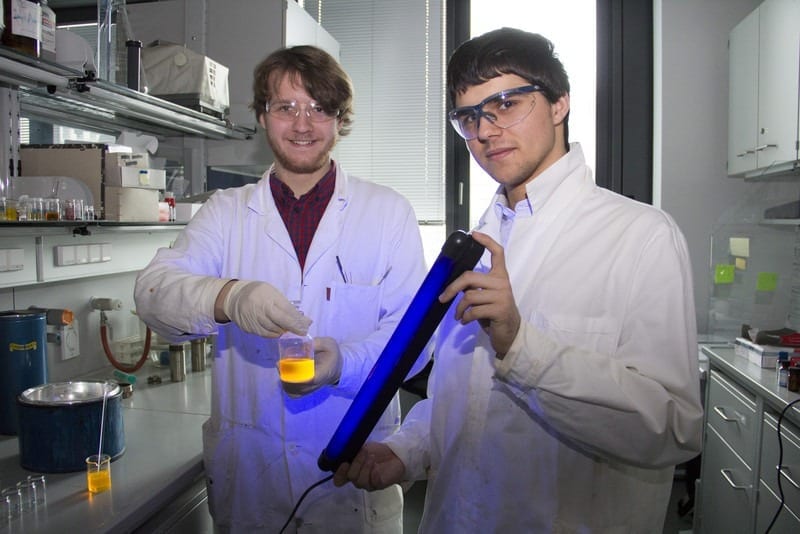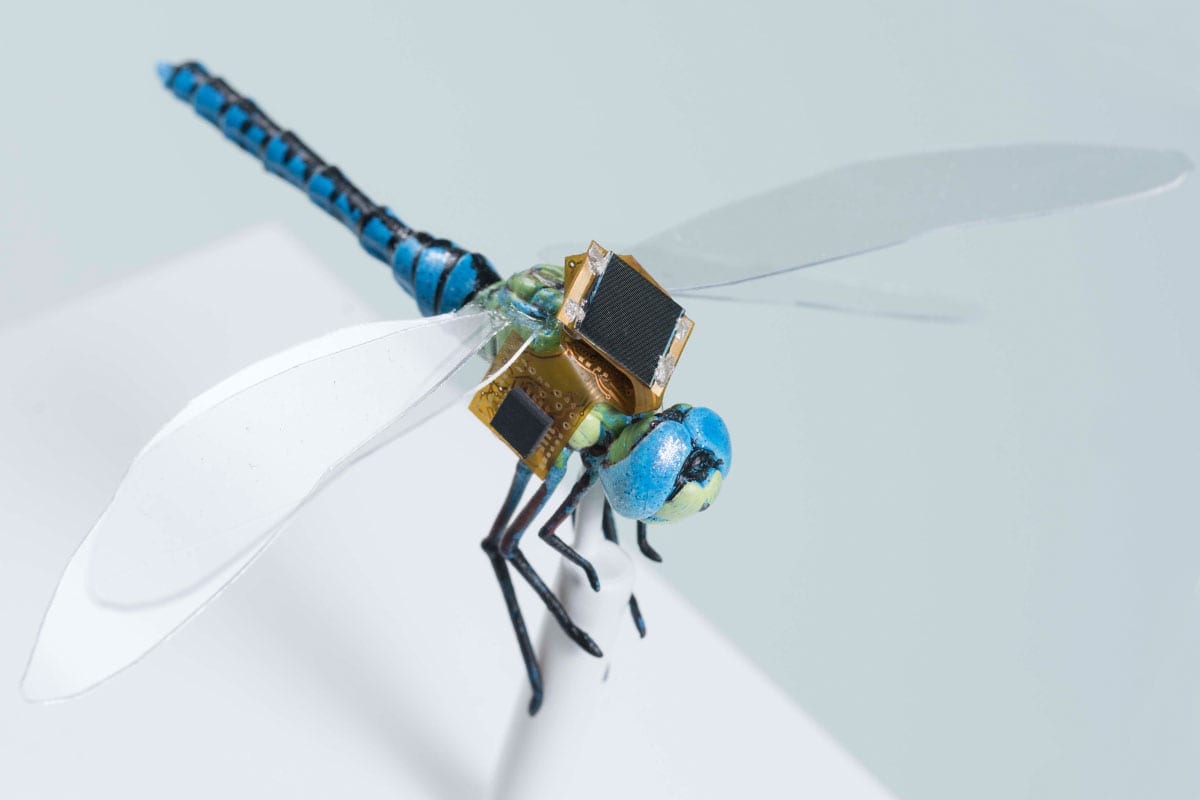
Dye synthesis in nothing but water instead of toxic solvents – researchers at TU Wien develop a highly efficient and environmentally friendly synthesis for organic pigments.
Perylene bisimides are a heavily investigated and sought after class of organic pigments, since they show interesting dye properties. While these compounds are red pigments in the solid state, when dissolved, they generate bright yellowish-green solutions under UV irradiation. Aside their optical appeal; organic molecules that appear colored in daylight often also show intriguing electronic properties. Therefore, organic dyes are promising lightweight materials for application as e.g. organic semiconductors, but also in for instance LCD displays or solar cells.
Rethinking a complex chemical synthesis
The laboratory of Dr. Miriam M. Unterlass at the Institute of Materials Chemistry at TU Wien has just reported the synthesis of more than 20 different perylene bisimide dyes. This is not impressive per se. The way they prepare these compounds is though: Conventionally, perylene bisimides are generated in highly toxic solvents and employing toxic and expensive catalysts. Moreover, classical reactions towards these dyes require an important excess of the starting compounds. Finally, tedious purification is necessary for obtaining dye products of sufficient purity. All in all, the conventional route is a complex chemical synthesis. “In our approach, we are using the starting compounds in a 1:1 ratio, i.e. without an excess of reactants. The starting compounds are dispersed in water inside a closed reactor. Then the mixture is heated to 200?C and increased pressure is generated”, explains Dr. Unterlass. “In fact, the reactor basically works like a pressure cooker.” Such reactions in hot water under pressure are called hydrothermal syntheses. After the reaction has completed, the final perylene bisimide dyes are obtained with high purity, thus removing the necessity for tedious purification. For actual electronic applications, perylene bisimdes are mostly implemented by device engineers and physicists, who often do not have access to chemical laboratories. The novel hydrothermal synthesis bears the potential of enabling an easy access to these materials – an important step towards realistic application.
From big molecules to small molecules
Previously, Miriam Unterlass’ team had developed a novel process for high-performance polymers, which equally takes place in hot water. The hydrothermal synthesis of perylene bisimide dyes now shows for the first time that small molecules can also be generated “in the pressure cooker”. The order of developments is rather untypical. Normally, novel synthetic pathways are first developed for small molecules – which are often easier to conceive – and later transposed to polymers, i.e. “big molecules”. Despite their small size, the hydrothermal synthesis was however very challenging. For perylene bisimides. They are very apolar, which means that they do not like water – at room temperature. By heating the water to increased temperatures, this challenge can however be met. The hydrothermal synthesis of perylene bisimides is highly efficient and environmentally friendly, and has just been published in the journal Chemical Communications.
Learn more: Fluorescence Dyes from the Pressure Cooker
[osd_subscribe categories=’fluorescence-dyes’ placeholder=’Email Address’ button_text=’Subscribe Now for any new posts on the topic “FLOURESCENCE DYES”‘]
Receive an email update when we add a new FLOURESCENCE DYES article.
The Latest on: Organic fluorescence dyes
[google_news title=”” keyword=”organic fluorescence dyes” num_posts=”10″ blurb_length=”0″ show_thumb=”left”]
via Google News
The Latest on: Organic fluorescence dyes
- In a first, scientists use new tech to see inside cancer cellson April 26, 2024 at 6:20 am
This technique might also help doctors understand how some cancer cells resist radiation treatment, among other benefits.
- Scientists released long-term data of ground solar-induced fluorescence to improve understanding of canopy-level photosynthesison April 24, 2024 at 5:00 pm
A recent study utilized ground-based instruments to measure solar-induced fluorescence (SIF) that reflect plant health and photosynthesis.
- DNA Synthesis Approaches: Will New Methods Stand The Test Of Time?on April 24, 2024 at 6:00 am
Both chemical and enzymatic synthesis companies need to continue working to overcome their respective hurdles.
- Scientists study lipids cell by cell, making new cancer research possibleon April 23, 2024 at 4:00 pm
Imagine being able to look inside a single cancer cell and see how it communicates with its neighbors. Scientists are celebrating a new technique that lets them study the fatty contents of cancer ...
- New nanocomposite from papaya peel waste exhibits promising photocatalytic and antibacterial activityon April 23, 2024 at 11:44 am
In a significant leap towards sustainable environmental management and antimicrobial strategies, a team of international researchers has successfully synthesized a fluorescent carbon dot (CD) and ...
- New benzofuran synthesis method enables complex molecule creationon April 16, 2024 at 12:30 pm
In the field of organic chemistry, scientists are always looking out for new types of reactions to unlock synthesis routes for challenging compounds. Most of the progress that we have witnessed in ...
- WEBINAR: Light up your western blots - Fluorescent western blotting tips, tricks & moreon March 26, 2024 at 12:00 am
While chemiluminescence has been the traditional approach to western blot detection, this strategy is being progressively supplemented or replaced with fluorescence-based detection. With the ...
- Aquatic Organic Matter Fluorescenceon November 12, 2023 at 10:24 am
This is the first comprehensive text on the theory and practice of aquatic organic matter fluorescence analysis, written by the experts who pioneered the research area. This book covers the topic in ...
- The renaissance of fluorescence resonance energy transferon September 18, 2023 at 6:47 am
Fluorescence resonance energy transfer (FRET ... which is in the nanosecond timescale for organic dyes. For dyes with lifetimes significantly faster than the modulation time, the emission ...
via Bing News










